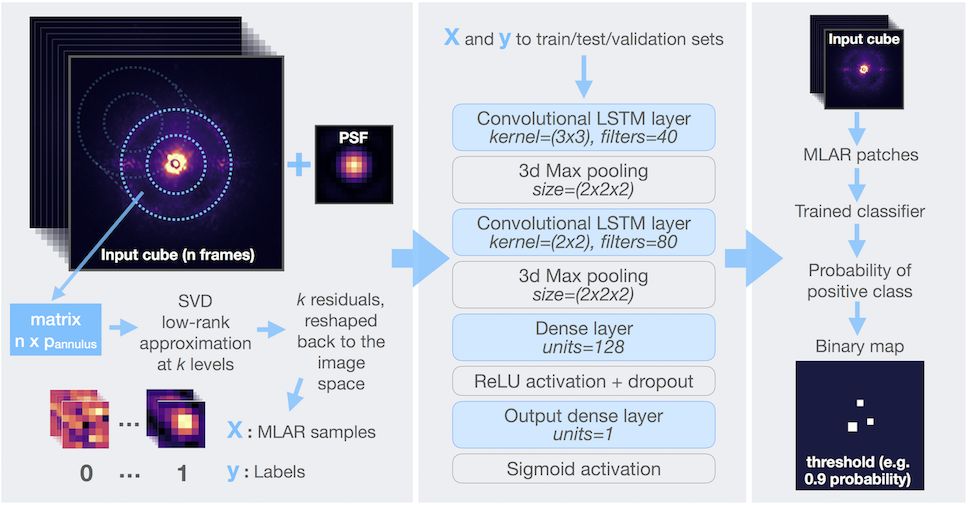For a complete list of publications take a look at my Google Scholar profile. A few selected publications, and their corresponding open source code can be found below:
DL4DS - Deep Learning for empirical DownScaling
We presetn DL4DS (Deep Learning for empirical DownScaling), a Python package that implements state-of-the-art and novel deep learning algorithms for empirical downscaling of gridded Earth science data. With DL4DS, a low-resolution gridded dataset can be downscaled with the help of an arbitrary number of auxiliary predictor and static variables, and a high-resolution reference dataset. The mapping between the low- and high-resolution data is learned with either a supervised (aka CNN) or a conditional generative adversarial (aka cGAN) Deep Learning model. The training can be done from explicit pairs of high- and low-resolution samples (MOS-style, e.g., high-res observations and low-res numerical weather prediction model output) or only with a HR dataset (PerfectProg-style, e.g., high-res observations or high-res model output). In DL4DS, we implement a channel attention mechanism to exploit inter-channel relationship of features by providing a weight for each channel in order to enhance those that contribute the most to the optimizaiton and learning process. Aditionally, a Localized Convolutional Block (LCB) is located in the output module of the networks in DL4DS. With the LCB we learn location-specific information via a locally connected layer with biases. DL4DS is built on top of Tensorflow/Keras and supports distributed GPU training (data parallelism) thanks to Horovod.

Supervised detection of exoplanets in high-contrast imaging sequences
We reformulate the exoplanet detection task (for angular differential imaging sequences) building on well-established machine learning techniques to take high-contrast imaging post-processing from an unsupervised to a supervised learning context. In this new framework, we presented algorithmic solutions using two different discriminative models: SODIRF (random forests) and SODINN (neural networks). The proposed supervised detection framework outperforms state-of-the-art techniques in the task of discriminating planet signal from speckles. For instance, SODINN improves the true positive rate by a factor ranging from ∼2 to ∼10 wrt. low-rank based approaches, working at the same false positive rate. The code has been publicly released and can be found on GitHub.

VIP: Vortex Image Processing Package for High-contrast Direct Imaging
The Vortex Image Processing (VIP) library is a python package dedicated to astronomical high-contrast imaging. It relies on the extensive python stack of scientific libraries and aims to provide a flexible framework for high-contrast data and image processing.
Low-rank plus sparse decomposition for exoplanet detection in direct-imaging ADI sequences. The LLSG algorithm
Inspired by recent advances in machine learning algorithms such as robust PCA, we proposed the Low-rank plus Sparse plus Gaussian noise (LLSG) decomposition of angular differential imaging sequences.
PhD Thesis:
Advanced data processing for high-contrast imaging-Pushing exoplanet direct detection limits with machine learning, 2017, Université de Liège. Supervisors: Prof. Jean Surdej, Prof. Marc Van Droogenbroeck and Dr. Olivier Absil. ORBi link.

